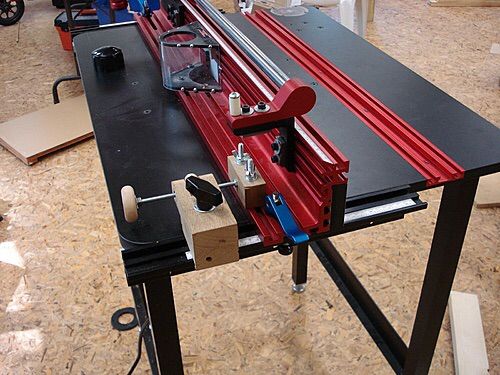Guys why is it when I see what I think is a micro adjuster for the fence , it's always on one side only ? For some reason I always thought you would want one on each end of the fence in order to keep it parallel to the miter slot . Not that your guiding material using the miter slot all the time , but it still has me wondering . I'd like to implement something like this when I build my fence but was thinking two of them









